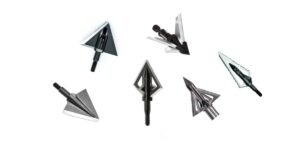Turkey hunting definitely comes with its fair share of challenges, the bulk of which must be successfully navigated to fill one’s tag. In truth, spring turkey hunting is anything but predictable.
As such, adaptability is key to making the most out of any such outing. However, even then, one still faces their share of tough times when afield.
Contents (Jump to Topic)
ToggleIn much of the country, the end of the spring turkey season is near. This presents a dilemma of sorts for those hunters who still find themselves with unfilled tags at their disposal.
Though the more significant part of turkey season has come and gone in most states, the days ahead still hold their share of promise. This is especially true for those willing to go the extra mile, to adapt and overcome.
The following are 6 strategies worth putting in play if you have yet to fill your turkey tag.
Call Conservatively
During the earliest days of season, a hunter can often get by with a bit of aggressive calling, often to their benefit. However, this is seldom the case during the latter day of season.
By this point, most gobblers have become educated and are far more reluctant when responding to hen vocalizations. Therefore, yelping at full volume might not be the best approach.
During the late season, soft cluck and purrs steal the show. Calling subtly in this manner is often more than enough to catch the attention of any tom that is seeking out a final hen.
Try dialing back the volume and frequency of your calling for the best results. In most cases, there is little need to call anymore often than once every 30 minutes.
Take A Less Aggressive Approach To Decoying
Early season turkey hunting is often highlighted by aggressive toms that will charge to the sight of a tom and hen decoy pairing. As the season stretches on, much of this aggression goes by the wayside, and toms begin regrouping for the summer ahead.
In many cases, even the most aggressive of toms start to shy away from confrontation instead of running into it.
Because of this, hunters should consider leaving their full strut decoys in the truck, instead opting for the use of one or more hen decoys. In any event, the sight of a lone hen is not intimidating in any manner and will typically draw a response from any tom that is still in search of an opportunity to breed.
In cases where territorial behavior is still evident, a jake/hen decoy pairing can also be effective.
Hang Tight To The Roost
By the last weeks of season, toms are far less apt to travel significant distances searching for the perceived hen that your calling represents.
In the majority of cases, late-season gobblers exercise an opportunistic approach to courtship and will seize upon the opportunity to check out any hens that are within sight distance. As such, the position of a hunter’s setup is vital.
Consider roosting the toms within a given area the night before you intend to hunt. This allows you to set up within a relatively short distance of these roost sights the following morning to catch the eye of a passive gobbler.
A tom will often take a closer look at any hen within their line of travel, including a decoy that is positioned only a couple hundred yards from the roost.
Take Advantage Of Tom Talk
After spring breeding concludes, toms regroup with one another for the summer. In many states, this behavior can be readily observed during the final week of season. Therefore, it can be of a hunter’s benefit to portray themselves as another tom looking for flock interaction.
Doing so can draw the attention of a gobbler that is no longer actively seeking hens and would otherwise be nearly impossible to lure into range.
In cases such as this, a hunter should opt for a series of gobbler yelps when calling instead of those of a typical hen. Gobbler yelps tend to come in a series of three notes and are slower in pace than those uttered by hens.
Yelps of this nature are also deeper and take on a coarser sound compared to standard hen yelps.
Take An Ambush Approach

Turkey Hunting from a Ground Blind
For many hunters, the most frustrating part of late-season hunting comes when dealing with toms that are mainly unresponsive to any form of decoying or calling.
This situation can be pretty maddening and seemingly leaves a hunter without recourse. When dealing with unresponsive toms, it is often best to take a far more minimalistic approach instead of an ambush approach.
Attempting to ambush a tom typically involves setting up within a natural travel corridor before waiting out a wayward gobbler. This approach is best exercised in areas with higher than average turkey numbers and predictable movement.
One simply sets up where well camouflage and waits patiently, without using a decoy or any type of calling.
Regroup If Necessary
Throughout the season, the general pattern of toms within a given area is prone to change. A wise hunter takes note of these changes and adapts accordingly.
Doing so typically requires a healthy dose of scouting and stellar attention to detail. At times, regrouping and adjusting to the conditions at hand can prove vital.
In some cases, gobblers abandon particular areas entirely, where they could be found daily during the earliest days of season. To be successful, a hunter’s movements should mirror those of the toms they are attempting to hunt.
Finding success during the late season is often as simple as finding an accessible tom that can be hunted effectively.
Following Through On A Plan
Turkey hunting during the final days of the season can be downright tough at times. However, one can mitigate a significant amount of this difficulty by simply adapting to normal seasonal variations in turkey behavior.
By exercising the strategies mentioned above, you will be better equipped to make the most out of this largely unpredictable time in the turkey woods and present yourself with the best possible opportunity at success.






